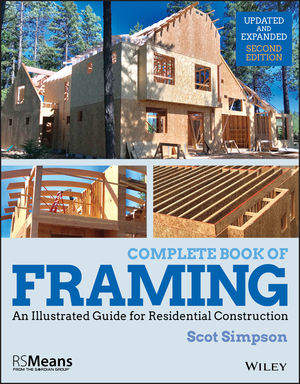An association well known for its development of standards used for commercial buildings is reaching out to home builders and building service organizations to share its resources for the residential market. Experiences learned from the design and operation of commercial buildings can reduce energy consumption and improve the indoor environment of homes and multi-family dwellings, according to ASHRAE, a global association of building technology professionals.
In 2013, the residential building sector was responsible for 21 percent of all primary energy consumption in the United States, accounting for almost 54 percent of the primary energy used by all buildings. Similar trends are also observed in other parts of the world. For example, in Europe, residential buildings account for 75 percent of the total building stock and are responsible for 26.2 percent of the total European Union final energy consumption in 2012.
“The expertise ASHRAE members bring to the design, construction and operation of commercial and institutional buildings at work could also be used to make their homes better places to live, but at present we are not contributing very effectively to this critically important market sector,” Bill Bahnfleth, Ph.D., P.E. a professor of Architectural Engineering and director of the Indoor Environment Center at The Pennsylvania State University, University Park, Pa. said. As Society president in 2013-14, Bahnfleth appointment a committee of ASHRAE residential experts and other stakeholders to study the residential market and propose how ASHRAE could better support it.
The Society recently released the committee’s report, “ASHRAE and the Residential Construction Market,” which contains a series of recommendations focused on providing more resources on residential and working with residential stakeholders. The report and additional information can be found at www.ashrae.org/residential.
In February, ASHRAE hosted a Residential Construction Market Stakeholder Workshop, inviting some 100 organizations and companies, recognized leaders in the residential buildings industry, to take part.
The workshop had two key objectives: to share information regarding various aspects of residential building performance; to hear from stakeholders regarding their perceptions of the residential building landscape, its research and standards needs; and discuss how stakeholders can work together to better serve this important sector of the economy.
The workshop attendees confirmed a variety of known needs in research and standards development; shared information about key trends in residential building performance, such as energy, water, durability and indoor environmental quality; and identified numerous opportunities for potential stakeholder collaboration.
An example of this collaboration is between ASHRAE, the National Association of Home Builders (NAHB) and the International Code Council (ICC), developers of the ICC Family of Codes for the built environment, to jointly develop the 2015 edition of the ICC/ASHRAE 700 National Green Building Standard. The standard has been used to certify more than 32,000 single- and multifamily homes and residential developments for reaching its established benchmarks for energy, water and resource efficiency, indoor environmental quality, home owner education and site development.
“We are off to a good start in this area, using a fresh, collab-orative approach to working in this important market sector,” Bahnfleth said.
Max Sherman, who chairs the Presidential Committee on the Residential Construction Market that developed the report, said their research showed the residential sector is of growing importance.
Studies show there were over 115 million dwellings in the United States (217 million in the European Union) in 2010. The projection is that by 2030 this number will grow to about 141 million in the United States (241 million in the European Union). Given that number is increasing, efficiency needs to increase as well. ASHRAE can play a significant role in the efforts to reduce energy consumption and environmental impact of the global building stock.
“Over 74 percent of all existing homes in the United States were constructed before 1989—before widespread adoption of model energy codes governing their construction,” Sherman said. “More than 40 percent of the European residential buildings have been constructed before the 1960s when energy building regulations were very limited. By almost any measure, most of these homes are likely under-insulated, have poorly performing fenestration, have significant envelope air leakage, need upgrades to all HVAC&R components and delivery systems, and contain outdated and inefficient lighting systems when compared to today’s basic energy code minimums. In addition, we need to treat these homes as systems that provide good indoor environmental quality for people. These needs define significant opportunity for energy, carbon, peak power and water savings within the residential sector.”






Report Abusive Comment